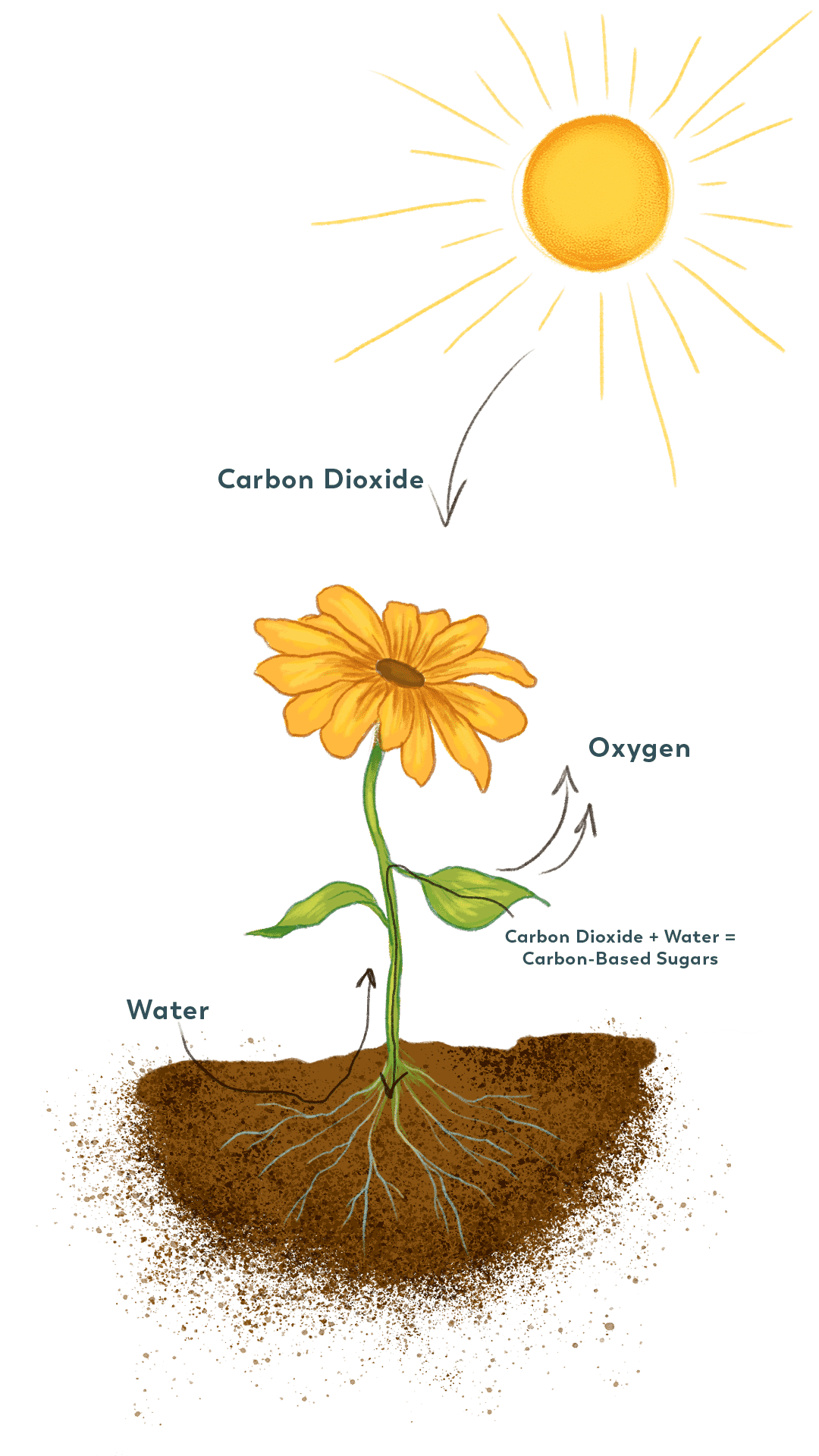Uncover
Plants, Animals, & Soil

Healthy soil is a storehouse for carbon, an essential nutrient for animals and plants.
So how does this carbon get into the soil?
With the help of plants and animals! When grass is cut or leaves fall off trees and plants, the plant matter creates a buffet for soil decomposers. The same is true when animals die. Those living things are made of carbon! Decomposers break apart the plant matter and animal bodies and move the carbon into the soil for living organisms to use. Healthy soil stores nutrients that feed the soil's microorganisms.
Dead plants and animals add carbon to the soil, and that soil carbon becomes food for living plants and animals.

How do plants get carbon through photosynthesis,
and how is some of that carbon moved into the soil?
Carbon also moves into soil after plants photosynthesize to make food. In this process, plants capture carbon dioxide from the atmosphere and use the sun’s energy to make carbon-based sugars (glucose) from the carbon dioxide and water.

Carbon Sequestration by plants is this natural process of capturing carbon in the soil. After plants make their carbon-based sugars during photosynthesis, some of this sugar moves down to plant roots for storage until needed by the plant, but as much as 40% of the carbon-based sugar is released to the soil.

